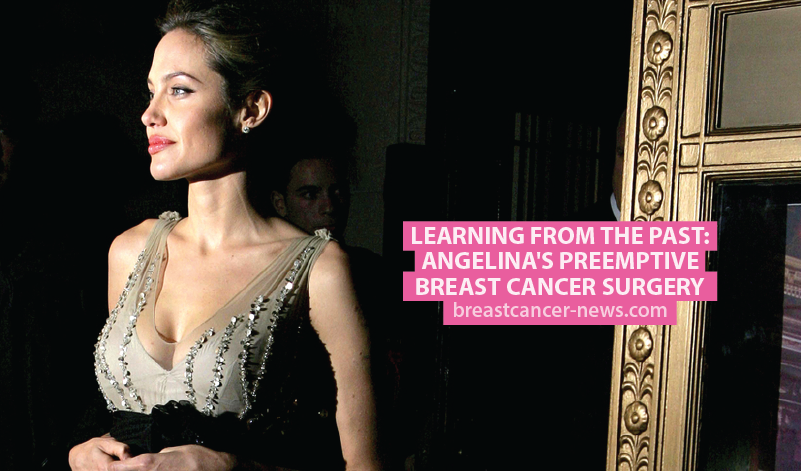
While the world is currently dissecting her private life following the recent announcement of plans to divorce Brad Pitt, actress Angelina Jolie’s advocacy for preventative breast cancer surgery must not be forgotten.
There are many risk factors for breast cancer, a main risk is genetic and involves faulty genes. Women who carry faulty genes such as BRCA1, BRCA2, TP53 and TPEN are statistically more likely to get breast or ovarian cancer. In fact, according to the National Cancer Institute, women with the faulty genes have a 65 percent risk for the cancers.
Angelina Jolie was one of those women.
Having preventative surgery such as a double mastectomy or the removal of the fallopian tubes and ovaries is seen as an effective way to reduce the risk of cancer – usually by around 90 percent — but it is considered drastic and should not be considered lightly.
Here’s 6 types of exercise you could try with breast cancer.
Jolie found that she had an 87% risk of developing breast cancer, which her aunt died from, and a 50% risk of contracting ovarian cancer – the disease that killed her mother at age 56. Jolie has the faulty BRCA1 gene, a rare mutation that just 0.25% of the general population carry, but is responsible for 2% of breast cancer cases and between 10 and 15% of ovarian cancer cases.
In February 2013, the actress underwent a double subcutaneous mastectomy and breast reconstruction surgery in secret but a few months later revealed the surgery to the world. Jolie wanted women to understand that they could make proactive choices rather than wait for the worst to happen. Her mastectomy choice reduced her risk of breast cancer to less than 5%.
In 2015, Jolie then decided to have her fallopian tubes and ovaries removed in a bid to reduce her chances of ovarian cancer.
Read more about Angelina Jolie’s preventative breast cancer surgery here.
The surgeon who carried out Jolie’s breast reconstructive surgery was vocal about how her choices had influenced many women to be tested for the faulty gene and how that action had saved many lives. In an interview with the NY Daily News in Oct. 2013, Dr. Jay Orringer predicted that Jolie’s action would ” have a tremendously lasting impact.”
According to an article in the Huffington Post, researchers conducted a study of 1,000 Austrian women and found that 92.6% of them learned by Jolie’s public story that reconstructive surgery was an option following a mastectomy.
The “Angelina Effect” was also seen in the UK where testing for breast cancer genes almost doubled and inquiries into preventative mastectomies increased significantly. Women who test positive for faulty genes such as BRCA1 and BRCA2 have a variety of options to help reduce their risk of breast cancer. In addition to mastectomies, women at risk can take cancer-preventing drugs, adopt healthier lifestyles, and get scheduled yearly screenings.
Here are ten basic health tips that could reduce cancer risk.
Breast Cancer News is strictly a news and information website about the disease. It does not provide medical advice, diagnosis or treatment. This content is not intended to be a substitute for professional medical advice, diagnosis, or treatment. Always seek the advice of your physician or another qualified health provider with any questions you may have regarding a medical condition. Never disregard professional medical advice or delay in seeking it because of something you have read on this website.
